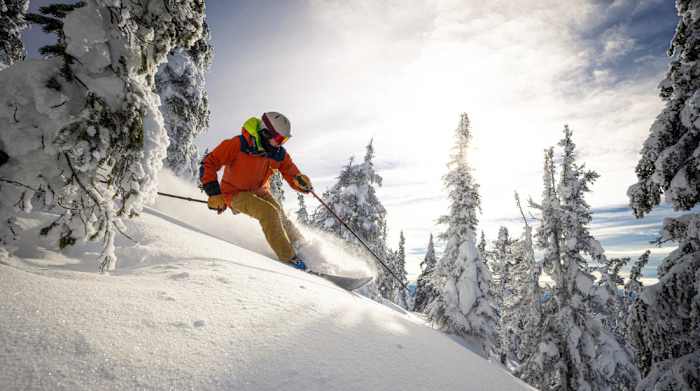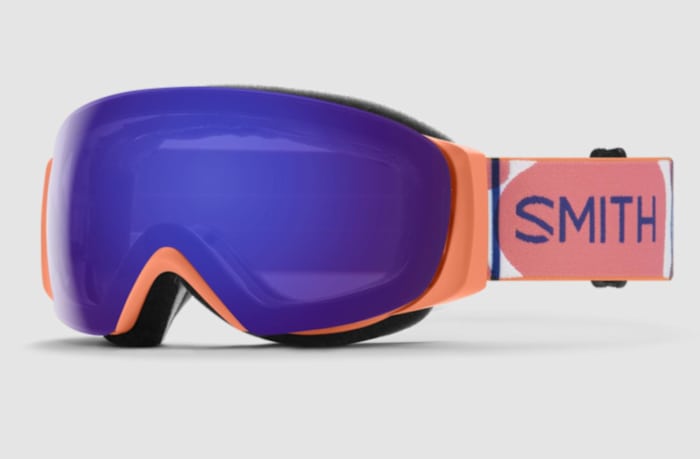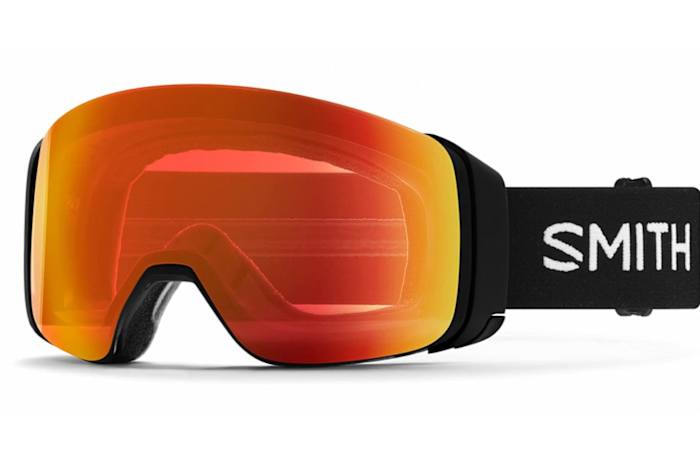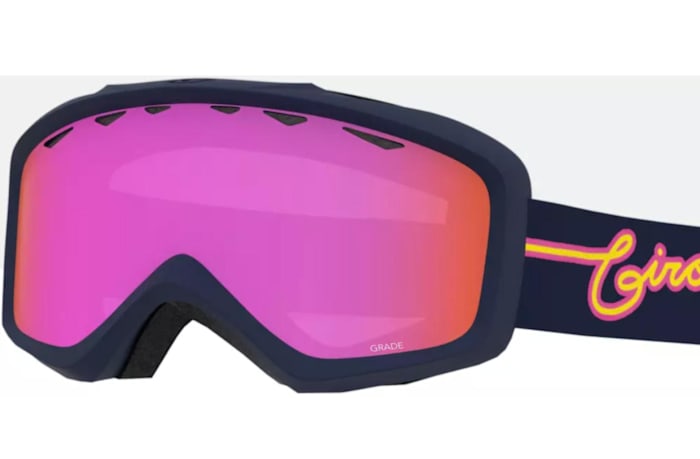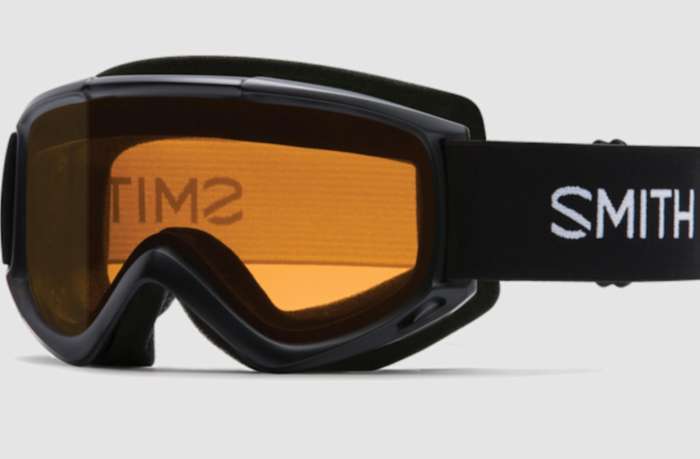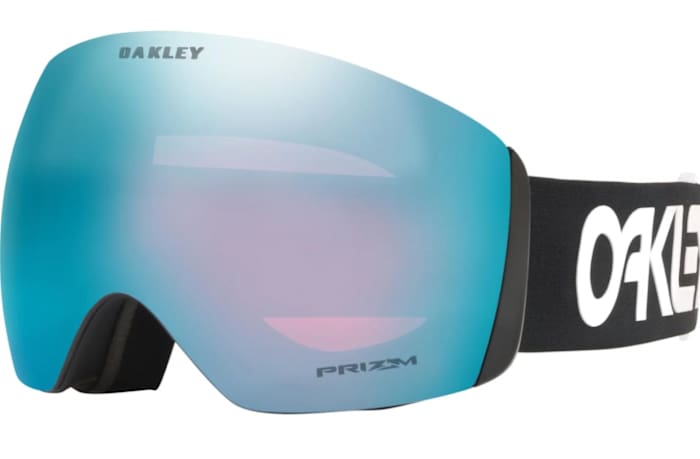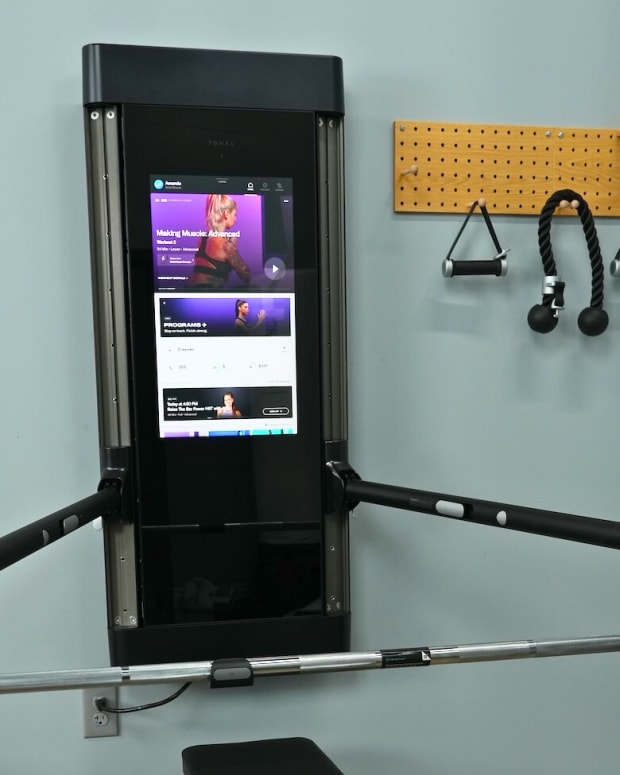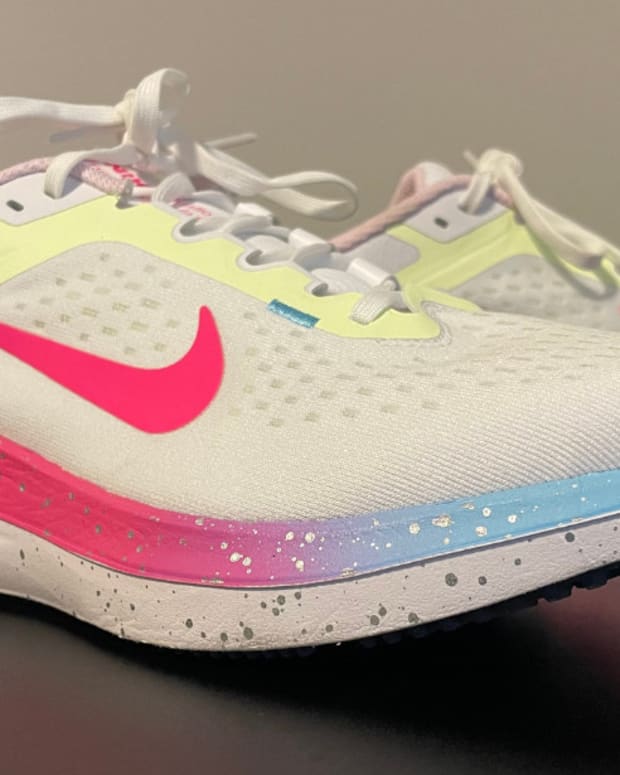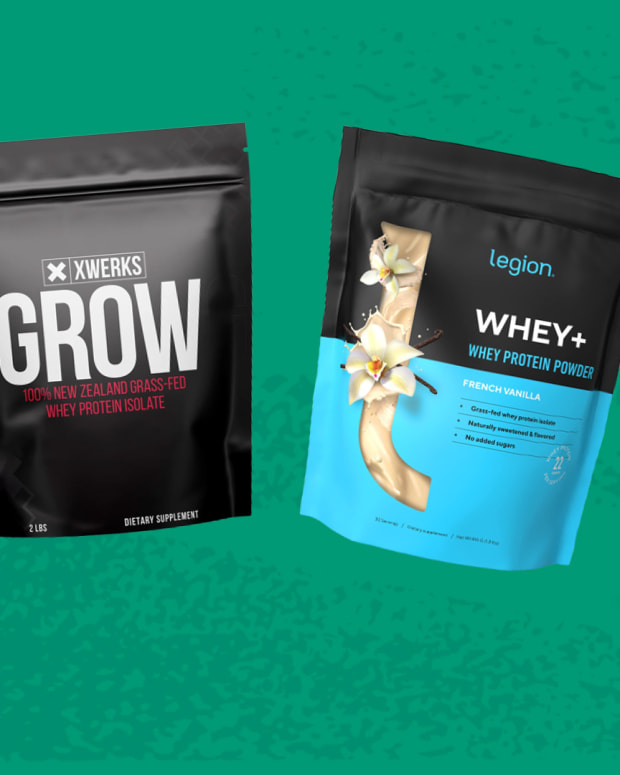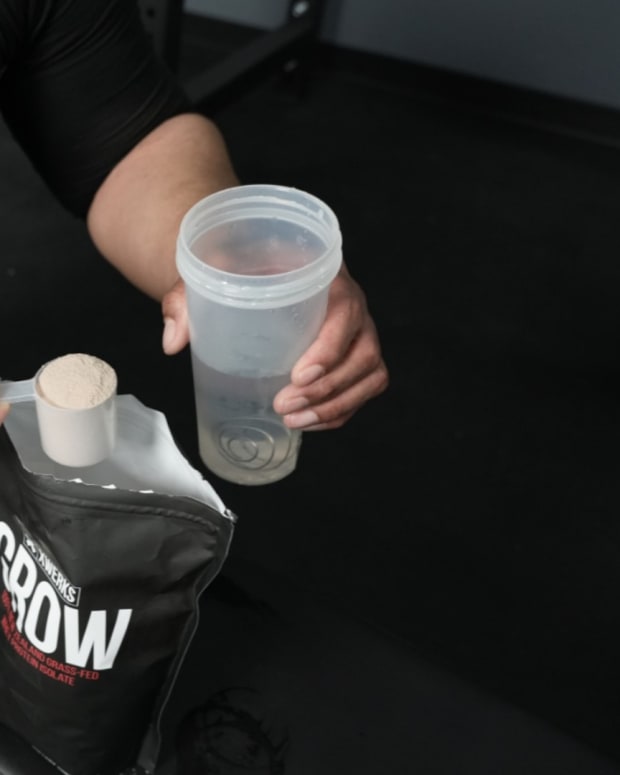The products featured in this article have been independently reviewed. When you buy something through the retail links on this page, we may earn commission at no cost to you, the reader. Sports Illustrated editorial staff are not involved in the creation of this content. Learn more here.
Hitting the slopes to enjoy the fresh powder is a great way to stay active and spend some time outside in the winter. Whether you choose to ski, snowboard or participate in some other snow sport, it’s important that you are decked out in the right gear, not only for comfort, but also for safety. Ski goggles are a necessity for skiers and snowboarders alike, as they protect your eyes from the cold air and wind on the mountain and improve your vision by reducing the glare of the sun reflecting off the snow.
Choosing the best pair of ski goggles can be overwhelming for beginners as well as seasoned skiers and snowboarders. There are so many options to choose from, ranging significantly in price, lens color, lens features and shapes, each with their own benefits and intended purposes. In this article, we share our top picks and reviews for the best ski goggles for different situations as well as a comprehensive buying guide about how to choose the best ski goggles for your needs.
Our Picks for the Best Ski Goggles of 2024:
- Best Women’s Ski Goggles: Smith I/O MAG S ChromaPop Snow Goggles
- Best Men’s Ski Goggles: Smith 4D MAG ChromaPop Snow Goggles
- Best Ski Goggles for Kids: Giro Youth Grade Snow Goggles
- Best Budget Ski Goggles: Smith Vogue Snow Goggles
- Best Night Ski Goggles: Smith Cascade Classic Snow Goggles
- Best Ski Goggles for Flat Light: Oakley Flight Deck Snow Goggle
Best Women’s Ski Goggles: Smith I/O MAG S ChromaPop Snow Goggles
Key features and specs
- Frame size: Women’s medium
- Interchangeable lenses: Yes
- Number of lenses included: Two; lenses with bright-light and low-light ChromaPop performance tints
- Lens shape: Spherical
- Light transmission: VLT of 13 to 23 percent for the bright light lenses in each set and 55 percent for the low-light lenses
- Polarized lenses: No
- Helmet compatible: Yes
- Price: $270
The women's Smith I/O MAG S ChromaPop snow goggles are our pick for the best ski goggles for women, given the impressive performance features and specs miniaturized into a frame size for smaller faces. The ChromaPop lenses enhance natural color and contrast to make nuanced differences in the snow cover pop so you can steer clear of icy patches and slick hardpack; essentially, the lenses help filter two specific wavelengths of light that otherwise cause color confusion. These ski goggles have a scratch- and impact-resistant spherical carbonic-x lens that’s said to provide distortion-free optics. The lens shape helps increase volume underneath the lenses to help prevent fog buildup. The goggles also have anti-fog treatment on the inside for advanced clarity, while the outside features a durable hydrophobic lens coating to repel moisture, oil, fingerprints and smudges.
As with many of Smith’s ski goggles, the women’s I/O MAG S ChromaPop snow goggles have tapered lens technology, which straightens out the incoming light rays based on the shape of your eye to improve optical clarity. With a quick-change MAG lens swap system, you can easily switch out lenses that snap securely into place with the strong N52 magnets. Two lenses are included, and you can purchase more separately. The magnets help guide the lenses into place even if your fingers are frozen. Once in place, the magnetic lenses are further secured via a dual-lacing mechanism to ensure you can land snowboard jumps without losing your lenses. You get low visible light transmission (VLT) and higher VLT lenses with the goggles for bright days and low-light conditions, respectively. To ensure a fog-free lens, prevent moisture buildup and optimize performance, these goggles feature a triple-layer DriWix face foam.
Pros:
- Comes with two lenses
- Strong and weatherproof N52 magnets automatically guide the magnetic lens into position for quick swaps
- ChromaPop lens technology improves contrast and detail and makes colors more vivid
- Includes Smith x gogglesoc lens protector and cleaning cloth
- Triple-layer DriWix face foam improves fit and prevents moisture and fog accumulation
- Also available in a low bridge fit
Cons:
- Higher price point
- Non-polarized lenses
Best Men’s Ski Goggles: Smith 4D MAG S ChromaPop Snow Goggles
Key features and specs
- Frame size: Medium fit
- Interchangeable lenses: Yes
- Number of lenses included: Two; lenses with bright-light and low-light ChromaPop performance tints
- Lens shape: Spherical
- Light transmission: VLT of 12 to 23 percent for the bright light lenses in each set and 55 percent for the low-light lenses
- Polarized lenses: No
- Helmet compatible: Yes
- Price: $320
These top-of-the-line ski goggles maximize your safety, comfort and vision on the slopes. The Smith Optics 4D MAG ChromaPop Ski Goggles provide awesome optics and performance to help you discern every detail of the terrain no matter what the conditions are on the mountain. These goggles feature advanced BirdsEye Vision lens technology developed by Smith Optics to increase the overall field of vision by 25 percent over other comparable ski goggles. Customer reviews on third-party sites like Backcountry and REI report that these goggles give you will get the broadest field of vision, and coupled with ChromaPop clarity, a lens technology that filters the specific wavelengths of light that cause color confusion, skiers report that the clarity and definition is phenomenal. Plus, the photochromic lenses automatically change their tint based on the lighting conditions to enhance visibility and UV protection.
Like the Smith I/O ski and snowboarding goggles, the Smith 4D MAG ChromaPop Ski Goggles have magnetic lenses that are interchangeable with weatherproof N52 magnets. The Carbonic-X spherical lenses are scratch-resistant and impact-resistant to enhance durability. Each lens is individually molded to increase visual acuity and contrast, and then treated with Fog-X inside and an anti-smudge outer coating. The tapered lens technology straightens incoming light to improve optical clarity.
User reviews report that the Smith 4D MAG ChromaPop Ski Goggles are comfortable and stay in place even if you take a nosedive. This is likely due to Responsive Fit technology, which provides flexibility of the frame to allow for micro adjustments for your specific facial contours. The undersurface of the frames feature a triple-layer DriWix face foam to wick away moisture and sweat. Lastly, the wide, silicone-backed strap integrates seamlessly into a helmet and vents moisture out of the goggles.
Pros:
- BirdsEye Vision improves peripheral visibility
- Tapered lens technology helps improve vision
- Anti-fog lenses and vents promote airflow and improve clarity
- Magnetic lens technology helps guide the lenses into place even when your fingers are cold
- ChromaPop lens technology improves contrast and detail and makes colors more vivid
- Stellar reviews on REI and Backcountry, especially about the field of vision, compatibility with a face mask and ease of the lens swap system
Cons:
- Expensive
- Frames might be small for men with larger faces or wide bone structure
Best Ski Goggles for Kids: Giro Youth Grade Snow Goggles
Key features and specs
- Frame size: Medium-sized youth frames
- Interchangeable lenses: No
- Number of lenses included: One
- Lens shape: Cylindrical
- Light transmission: 39 to 41 percent VLT depending on the tint you choose
- Polarized lenses: No
- Helmet compatible: Yes; compatible with all Giro snow helmets
- Price: $60
If you’re going to hit the slopes with your kiddos, they’ll need eye protection that also improves their ability to see. Our top pick for the best kids’ ski goggles are the Giro Youth Grade Snow Goggles. Much like the brand’s bike helmets, which are known to be high-performing yet a great value, these Giro youth goggles have lots of great features while being affordable and looking great. The frames and lenses are available in different colors, which provide the right sun protection depending on the lighting conditions on the slopes to optimize clarity. The smaller frame size is ideal for youth skiers and snowboarders and there is a dual density face foam with micro fleece to provide a comfortable and cozy seal of the ski goggles against the face to keep out cold air and wind. The fleece also helps the goggles stay put on your child’s face. All of the lenses also feature an anti-fog treatment.
The Giro Youth Grade Snow Goggles are compatible with all Giro ski helmets, but user reviews note that these kids’ ski goggles have a fairly universal fit and seem to work with most kids’ ski helmets, even those that aren’t Giro.
Pros:
- Mirrored lenses
- Affordable price point
- Kid-specific fit
- Different lens colors available
- Anti-fog
Cons:
- Lenses are not polarized
- Frames might be too large for kids under the age of five
Best Budget Ski Goggles: Smith Vogue Snow Goggles
Key features and specs
- Frame size: Small
- Interchangeable lenses: No
- Number of lenses included: One
- Lens shape: Cylindrical
- Light transmission: 12 to 17 percent, depending on the tint you choose
- Polarized lenses: No
- Helmet compatible: Yes
- Price: $50
It’s no surprise that Smith skiing and snowboarding goggles have earned numerous spots on this list of best ski goggles, as Smith has built a reputation for creating high-quality snow goggles for all types of needs. Although many of the premium, feature-packed Smith ski goggles have a hefty price tag, the brand also makes budget-friendly ski goggles for beginners who are just starting to get the feel of skiing and snowboarding. The Smith Vogue Snow Goggles are great for smaller faces and are designed to provide a clear, fog-free field of view on the slopes. These goggles have a compression-molded, single-layer foam interface to provide a draft-free seal to block wind and moisture. They are compatible with Smith ski helmets to eliminate gaps and vent warm, moist air away from your goggles to help keep the lenses clear. Even if you own a different brand of ski helmet, the Smith Vogue Snow Goggles are likely compatible (but double check to be sure!), due to the helmet-compatible strap. The dual strap adjustment system is backed with silicone to ensure the goggles stay put. To further improve the fit and seal of the goggles against your face, these budget snow goggles feature Responsive Fit technology, which is like a suspension system that allows the frame to micro adjust and flex to the contours of your specific face shape.
The cylindrical dual lenses feature a Fog-X lens treatment, which helps disperse and absorb moisture to prevent fogging. The lenses are not polarized, but they do provide 100 percent protection against all UV rays. In terms of light transmission, the Green Sol-X Mirror lenses provide 12 percent VLT, while the Red Sol-X Mirror lenses provide 17 percent VLT.
Pros:
- Affordable price
- Positive user reviews
- Offer a comfortable fit
Cons:
- Lenses are not interchangeable or polarized
- Low VLT makes them ideal for sunny days but not flat light or low-light
Best Night Ski Goggles: Smith Cascade Classic Snow Goggles
Key features and specs
- Frame size: Medium fit
- Interchangeable lenses: No
- Number of lenses included: One
- Lens shape: Cylindrical
- Light transmission: Gold Lite lenses have 55 percent VLT and clear lenses allow 84 percent VLT
- Polarized lenses: No
- Helmet compatible: Yes
- Price: $35
The Smith Cascade Classic Snow Goggles feature a traditional style with modern technology, such as an anti-fog dual thermal lens design and soft, compression-molded hypoallergenic face foam for a comfortable and reliable seal. Smith has designed these goggles for low-light and night skiing. The Gold Lite lenses allow 55 percent VLT to improve definition and optics in overcast or lowlight conditions. The clear lenses allow 84 percent VLT to enhance visibility during night skiing or in extreme low light by minimizing tinting and maximizing the light that can get through. Although the lenses are not polarized or photochromic, they do provide 100 percent protection against UV rays. Ultimately, while the Smith Cascade Classic Snow Goggles might not be the best everyday ski goggles given their limited features and VLT specs, this model is great for avid skiers to throw in your kit for hitting the slopes at night, or for those who regularly like to get in a few runs down the mountain after work but don’t intend to do much daytime skiing.
Pros:
- Affordable price point
- Two lens options for either low-light or night conditions
- Non-irritating hypoallergenic face foam
Cons:
- Lenses aren’t interchangeable
- Lenses aren’t polarized
Best Ski Goggles for Flat Light: Oakley Flight Deck Snow Goggle
Key features and specs
- Frame size: Large
- Interchangeable lenses: Yes
- Number of lenses included: One
- Lens shape: Spherical
- Light transmission: VLT of 13 to 23 percent for the bright light lenses in each set and 55 percent for the low-light lenses
- Polarized lenses: No, but Prizm lenses feature similar technology
- Helmet compatible: Yes
- Price: $170
The Oakley Flight Deck Ski Goggles have long been a popular choice among skiers and snowboarders alike for good reason: The innovative design maximizes your field of view so you can see everything around you and have unparalleled optics on the slopes. This makes this pair of goggles one of the best ski goggles for cloudy, overcast, foggy or flat light days. In fact, Oakley reports that the design for the Flight Deck ski goggles was inspired by the helmet visors of fighter pilots to help maximize visibility. The resulting broad field of view is afforded by the large frame, spherical lens shape and rimless design. These goggles are also designed to be OTG-friendly, with convenient little notches in the frames to hold your prescription eyewear in place.
The lenses are interchangeable via an effective ridgelock lens attachment for quick-change swaps. However, the ski goggles only come with one lens, and additional lenses cost about $70 each. Although the lenses aren’t technically polarized, the goggles feature Prizm lenses, which is similar technology that enhances color, contrast and clarity. The dual lenses on the Oakley Flight Deck Ski Goggles have an F3 anti-fog coating, which keeps the lenses free from moisture so they stay clear, even as your face heats up. The lenses provide 100 percent protection against UVA/B/C rays, as well as harmful blue light. They also meet requirements for high-impact protection.
Perhaps most importantly, customer reviews rave about the comfort of these goggles. The frames are designed to be pliable and flexible in order to adjust to the contours of your face and provide the perfect seal via the proprietary Flexible O Matter chassis. The fit and seal are augmented by the moisture-wicking, triple-layer face foam and a fleece coating. To keep the ski goggles in place as you navigate the bumpy moguls, there is a wide adjustment strap, which, coupled with the rimless design, also makes the ski goggles compatible with most ski helmets. Overall, given the broad field of view, large frame size and Prizm lenses, the visibility on the slopes afforded by these snow goggles is outstanding, even in flat light conditions and overcast days.
Pros:
- Quick-change system is easy to use and fast
- PRIZM lenses work like polarized lenses for enhanced optical clarity
- OTG-friendly
- Offer 100 percent UVA/B/C protection
Cons:
- Frames may be too large for small faces
- Only comes with one lens
How to Choose a Pair of Ski Goggles
Ski goggles are available with many different shapes, designs, lens types, colors and features, all of which will affect the performance and price point. Here are the most important factors to consider when choosing the best ski goggles to buy for your needs:
Frame size and style
Ski goggles usually denote the frame size in categories such as “medium-sized frames” or “large frames.” It's important to pay attention to this information when choosing the best ski goggles for you because the size of the frames will determine how well the ski goggles fit on your face and how much protection they provide. Ski goggles with larger frames not only offer greater skin protection from the cold and wind, but they also provide a more expansive field of view in every direction without obstructing your vision. However, large frames may not fit well on small faces, particularly if you have a slender face. If the frame is too wide for your face structure, there can be gaps between the ski goggles and your skin, allowing cold air to enter the interface between the goggles and your face, which can also fog up the lenses and inhibit visibility in addition to being cold and uncomfortable. Ultimately, one of the purposes of wearing ski goggles is to insulate your eyes from blasts of icy wind and snow spray, so the proper fit is key. Ski goggles can also be frameless or rimless. Frameless goggles look sleeker and they maximize your field of view, but rims or frames around the lenses tend to make the goggles and frames more durable. Frameless goggles tend to have a low bridge, which means they sit closer to the nose and flatter against your face.
Lens type and shape
Ski goggles usually have cylindrical, spherical or toric lenses. Each of these different shapes have different benefits, but the best shape is often a matter of personal preference relative to your own face shape and what feels comfortable to you. Cylindrical ski goggle lenses curve side to side across your eyes and face but are flat up and down without any appreciable curvature. Spherical goggle lenses curve both side to side and up and down (between your forehead and nose). Toric lenses have a very slight curvature in the vertical direction. Cylindrical lenses are usually less expensive than spherical or toric lenses but can reduce peripheral vision and are also less effective at reducing glare. Glasses wearers will want to look for OTG goggles (over the glasses), which feature a shape that is compatible with eyewear underneath, and may even have notches or a system to help keep the goggles in place over your prescription eyewear.
Lens color
The color or tint of the lenses on your ski goggles influences the amount and wavelengths of light that gets filtered or transmitted to your eyes. Visible Light Transmission (VLT) is a measure of the amount of light that penetrates the lenses and reaches your eyes, and all ski goggles will have a VLT percentage. Ultimately, the VLT of a lens affects how well you can see on the slopes. Lenses that have a lighter tint (yellow, gold, amber, pink and lighter green) allow more light to pass through, so they have a higher VLT and are best suited for cloudy days. Clear lenses will have the highest VLT (between 80-100 percent), making them ideal for night skiing. Darker tints, such as brown, gray, black and dark blue, allow less light through the lens, so they have a lower VLT and are better for bright, sunny days.
Ventilation and fogging
One of the biggest complaints that many people have when using cheap ski goggles is that moisture can build up inside them, impeding visibility. Choosing ski goggles that have vents incorporated into the perimeter of the frame or along the sides will help improve airflow, circulation and temperature regulation, and will help prevent the lenses from fogging up when your body heat warms up the lenses from the inside. To further reduce moisture buildup and promote clarity, look for lenses that are treated with anti-fog coatings.
Fixed or interchangeable lenses
Budget ski goggles have fixed lenses. This means that the lenses are permanently integrated into the frames, so you are stuck with the one lens color no matter what the lighting conditions are on the slopes. Plus, if your lenses crack, you’ll need a whole new pair of ski goggles because you cannot replace the lenses. More expensive ski goggles often feature interchangeable lenses, allowing you to swap in lenses of different colors and types depending on the lighting and conditions. This increases the versatility. Unless you are on a really tight budget, buying ski goggles with interchangeable lenses is usually worth it, especially if you plan to ski or snowboard regularly in different weather conditions and times of day.
Lens technology
Perhaps the biggest difference you will find between inexpensive ski goggles and top-of-the-line ski goggles is the quality, types and features of the lenses themselves. At the bare minimum, the goggle lenses should provide 100 percent protection against UVA, UVB and UVC rays. Beyond that, ski goggle lenses may provide advanced features and treatments to improve performance and optimize optical clarity and visibility in the snow. For example, photochromic lenses automatically adjust their tint according to the lighting to best enhance color quality and definition. Polarized lenses enhance color, definition and detail while decreasing eye strain because polarization reduces glare and reflected light while helping to highlight icy spots and hardpack that might trip you up. Tinted lenses help create contrast in an otherwise seemingly endless expanse of white. This enables you to better differentiate terrain including moguls, patches of ice and raised powder. Polarized lenses and tinted lenses reduce the need to squint to shield your eyes from the reflection of the sun (Getting vitamin D is one benefit of skiing on sunny days, but it’s also important to protect yourself with sunscreen and goggles.) Choose ski goggles with the lens features that are important to you, bearing in mind that the cost will increase with these types of advanced technology.
Price
The price of ski goggles varies widely, mainly based on the quality and characteristics of the lenses, including any specialized treatments and the construction of the frames. Entry-level, budget-friendly ski goggles for beginners may cost around $25, while ski goggles with advanced technology, superior materials and special coatings can cost upwards of $400 or more. Your budget will largely determine the quality and features you’ll be able to expect, but you can usually find a great pair of ski goggles for recreational skiing for $150-200.
How We Chose the Best Ski Goggles
To choose the best ski goggles, we reviewed the top ski goggles from reputable manufacturers, such as Smith Optics, Zeiss, Julbo, Spy Optic and Dragon. Each pair of ski goggles was evaluated based on its features, helmet compatibility, venting, lens type and features, performance specs and customer reviews. We combed through reviews to evaluate the comfort, clarity, field of view, performance in different weather and lighting conditions, durability, fit and ease of use of the interchangeable lens system, if applicable. We tried to pick ski goggles that not only fit different budgets, skier levels and skier categories (women, men, children, etc.), but also the best ski goggles for low-light and bright conditions, as well as a relatively mild temperature day and a freezing morning on the mountain.
To make the most out of those bluebird days, check out the best home gym equipment to help get your in shape for a day on the slopes.
In other words, we chose the top ski goggles that would be as versatile, adaptable, rugged and capable as your own gusto to hit the slope no matter what the winter weather might bring.
How to Clean Ski Goggles
The best way to clean ski goggles is to put a little warm water on microfiber cloth and then gently blot the outside of the lenses to clean them. Do not wipe or swipe the microfiber cloth against the lenses because even though these cleaning clothes are delicate, they can scratch lenses. Do not use any sort of cleaner on your ski goggles, and if at all possible, avoid cleaning the inside because there might be specialized anti-fog treatments that you could disrupt.
Ski Goggle FAQs
What do ski goggle percentages mean?
The percentages refer to the visible light transmission (VLT), or the percentage of light that gets through the lens to reach your eyes. The VLT of ski goggles can range from the single digits to 100 percent. The higher the VLT, the more light that will penetrate the lens and reach your eyes. These lenses will be clear or have very little tint. Ski goggles with a high VLT are ideal for night skiing and skiing on low-light or cloudy days, whereas ski goggles with a low VLT have a dark tint are intended for skiing on a bright sunny day.
What are the best ski goggles for bright light?
On really sunny days, you want lenses with a dark tint and lower VLT (25 percent or less). This will help block out excess light to improve contrast and clarity. Mirrored lenses or dark tints like black, red, platinum and gray work well in bright light.
What are the best ski goggles for flat light?
With flat light or low light, the sunlight is trying to penetrate thicker cloud cover or fog. This leads to a significant loss of contrast and depth perception on the slopes. High-contrast lenses or contrast-boosting lenses are ideal in flat light, and the lenses should have a high VLT (26-70 percent) to allow in more light. Lenses with softer colors such as rose, yellow and gold will help increase contrast in overcast or flat light conditions.
How long should ski goggles last?
If you take care of your ski goggles, they should last three to five years or longer, depending on the quality of the ski goggles, how you store them and how much use they get. Cheap ski or snowboarding goggles may last less, even if you take good care of them.
What color lenses are best for snow?
All ski goggles are intended to improve visibility in the snow. The best lens color depends on the lighting rather than the presence of snow. Choose darker tints for bright light (black, gray, red or platinum). Blue, green or red lenses work well for partly cloudy days. On overcast days, choose lightly tinted lenses like rose, gold or yellow.
How often should ski goggles be replaced?
Ski goggles need to be replaced as soon as they are damaged in a way that impedes performance or comfort.
Do ski goggles scratch easily?
Cheap ski goggles can scratch easily. The lenses are delicate. However, more expensive ski goggles are usually treated with a special hard coat to prevent scratching and improve the durability of the lenses. It’s usually a wise investment to increase your budget slightly to buy ski goggles that have an anti-scratch coating because scratches can significantly impede your visibility and may render the ski goggles unwearable. Storing your goggles in a microfiber bag or case when not in use is a good way to help prevent accidental scratches.
Final Thoughts
Overall, ski goggles are an essential piece of safety gear for anyone who enjoys snow sports. The best snow goggles fit well and improve optics on the slopes by increasing definition, reducing glare and preventing snow and precipitation from getting in your eyes. Choosing the best ski goggles for your needs involves considering your budget, the types of conditions you will be skiing in, the shape and size of your face, the helmet that you will use, the features of the lenses that matter most to you, your level as a skier or snowboarder and how often you plan to wear the ski goggles.
Prices are accurate and items in stock as of publish time.
